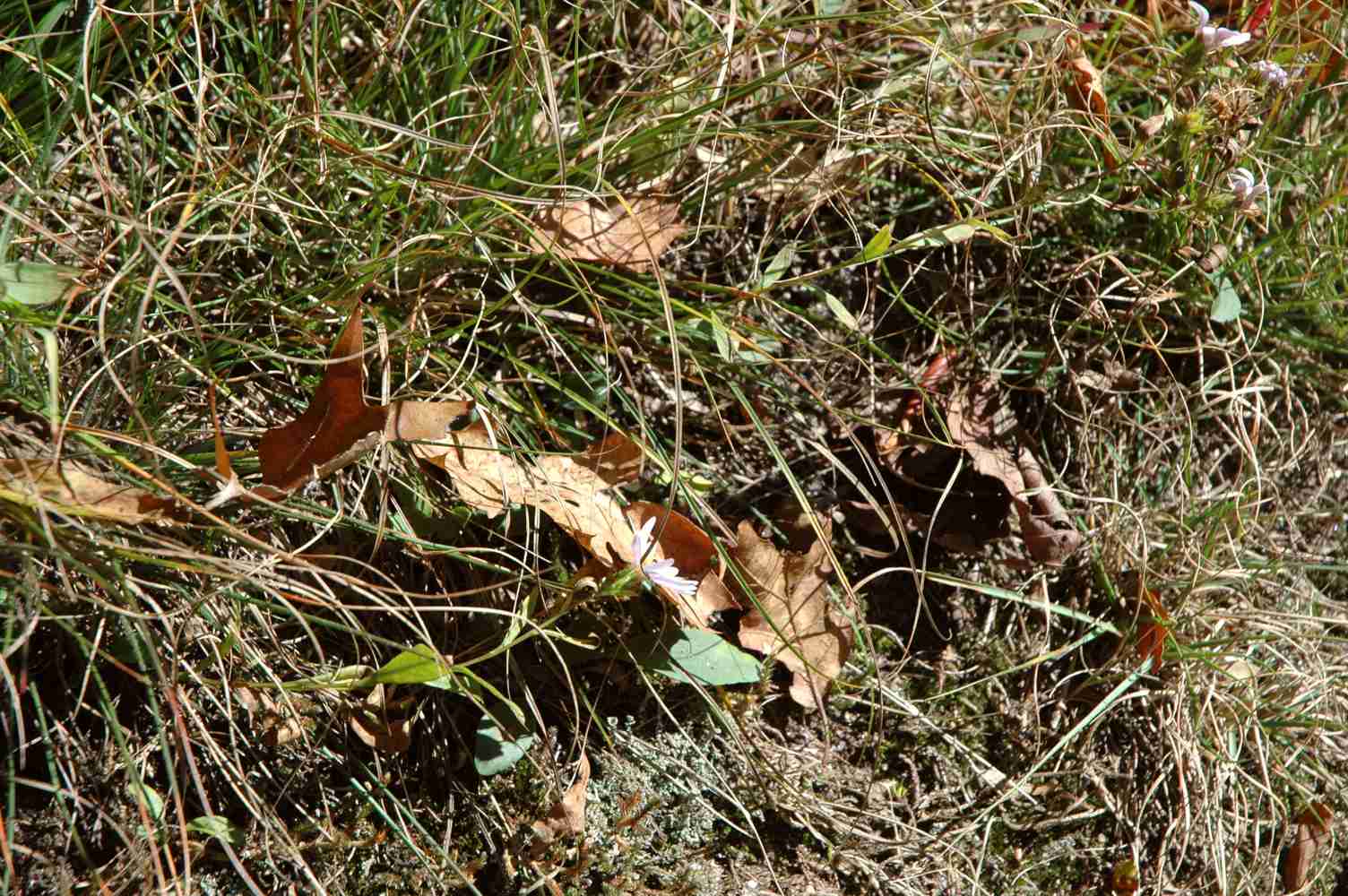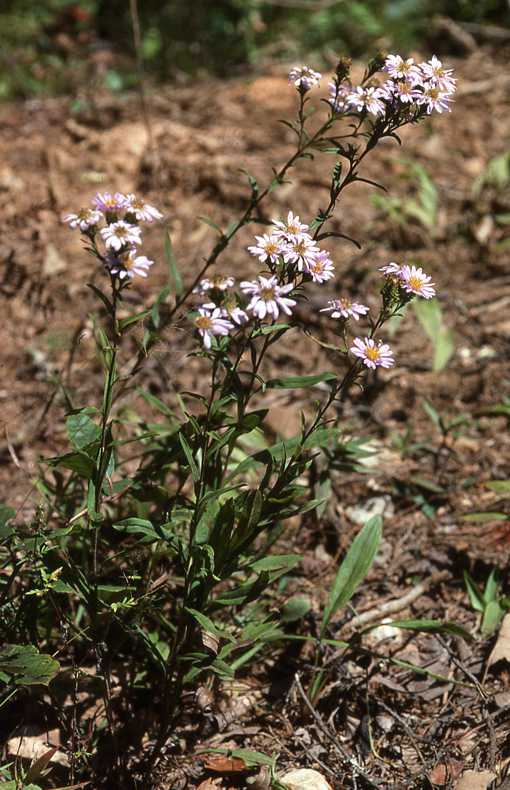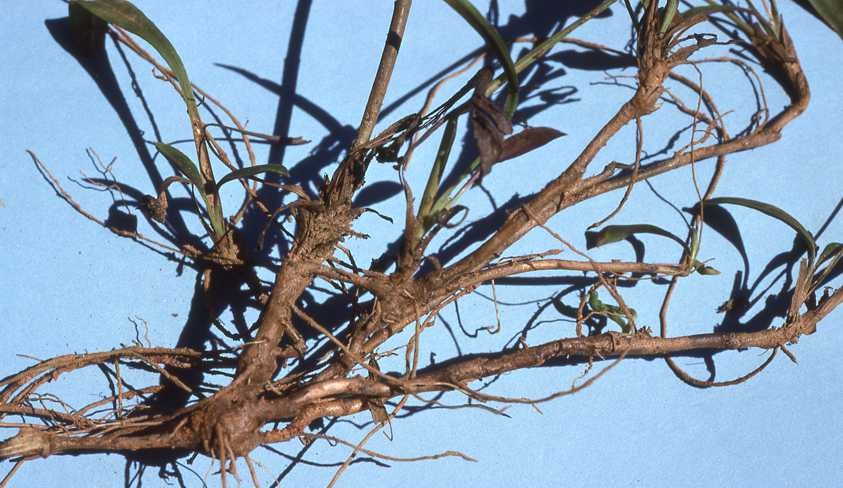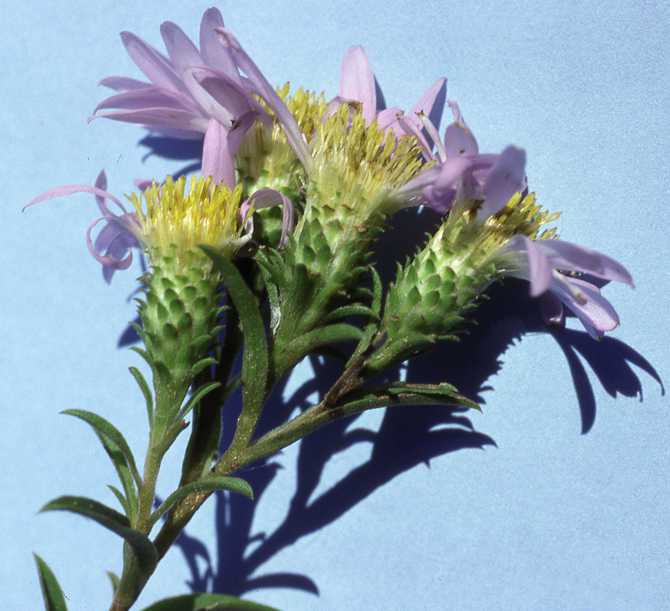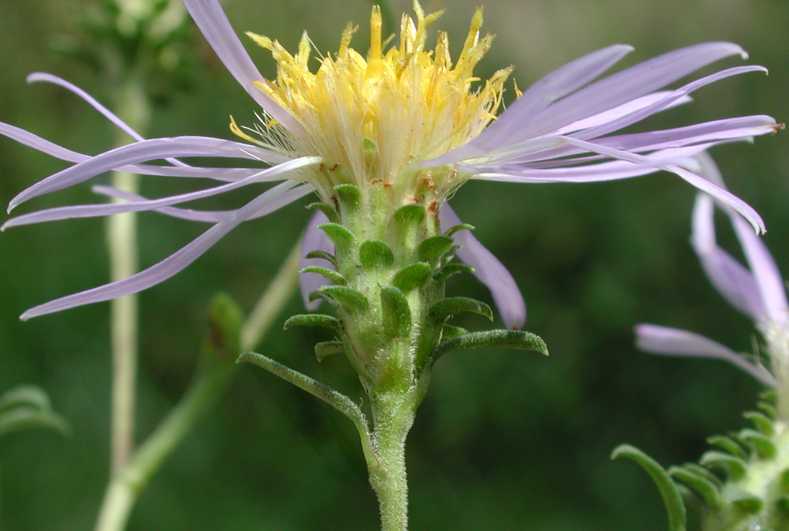Creeping Aster
Eurybia surculosa (Michx.) G.L. Nesom is native to sandy and gravelly soils in the central and southern Appalachian Mts. from Ohio western Virginia south to Georgia and in a small disjunct area on the coastal plain in South Carolina and Georgia (Brouillet 2006 FNA). The species was first described as Aster surculosus Michx. The species is distinguished from similar species by its herbacous rhizomes that become woody, slender and scaly, involucres 7-11(-13) mm, 35-65 phyllaries, 13-30 violet rays, and 25-40 discs with tubes shorter than the throats. It can be confused with E. compacta, its close relative from the coastal plains. Its larger heads help to differentiate it from E. compacta. The species is tetraploid (2n=36).
Eurybia surculosa is of conservation concern in Virginia and Alabama. It is often confused with E. compacta, its close relative from the coastal plains (Brouillet 2006 FNA).
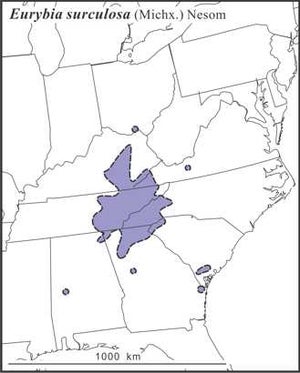
Last revised 12 May 2025 by J.C. Semple
© 2025 J.C. Semple, including all photographs unless otherwise indicated
1-6. Eurybia surculosa. 1. Plants on road embankment, Semple 11592, Jackson Co., North Carolina. 2. Flowering shoots, Semple & Suripto 9845, Cherokee Co., North Carolina. 3. Rhizomes, S & S. 9845. 4. Leaves, S & S. 9845. 5. Inflorescence, S & S. 9845. 6. Involucre and florets, Semple & B. Semple 11225, Transylvania Co., North Carolina.






